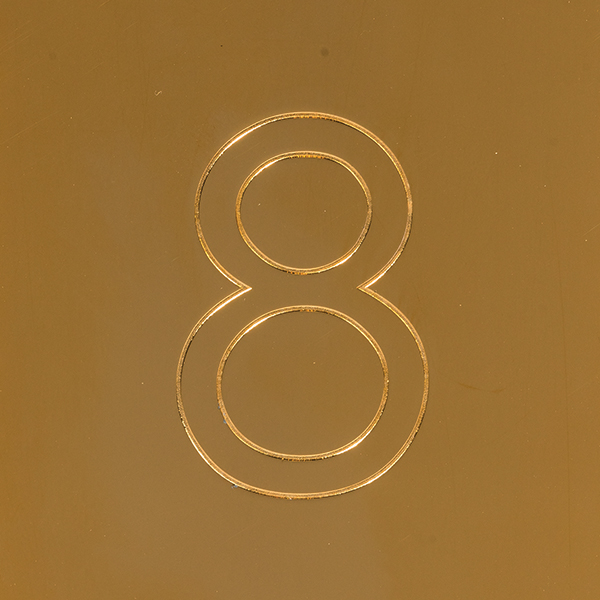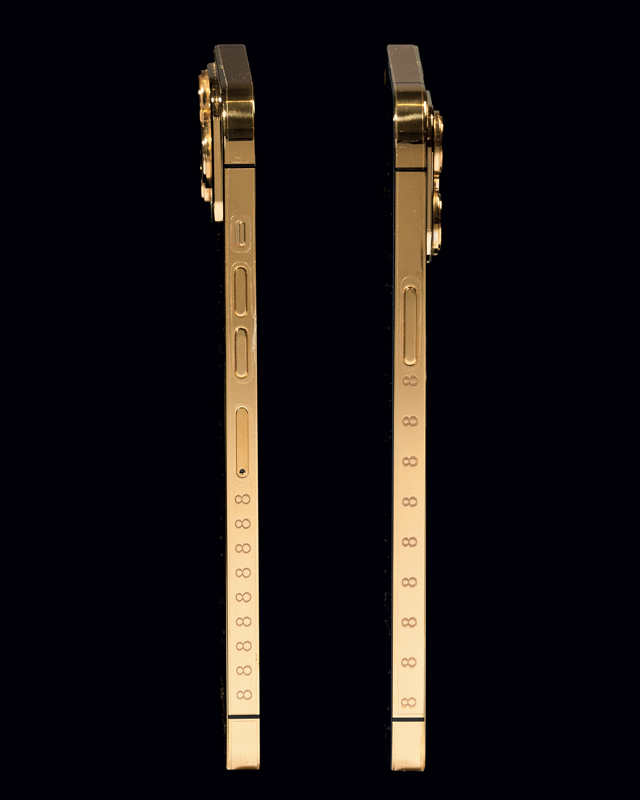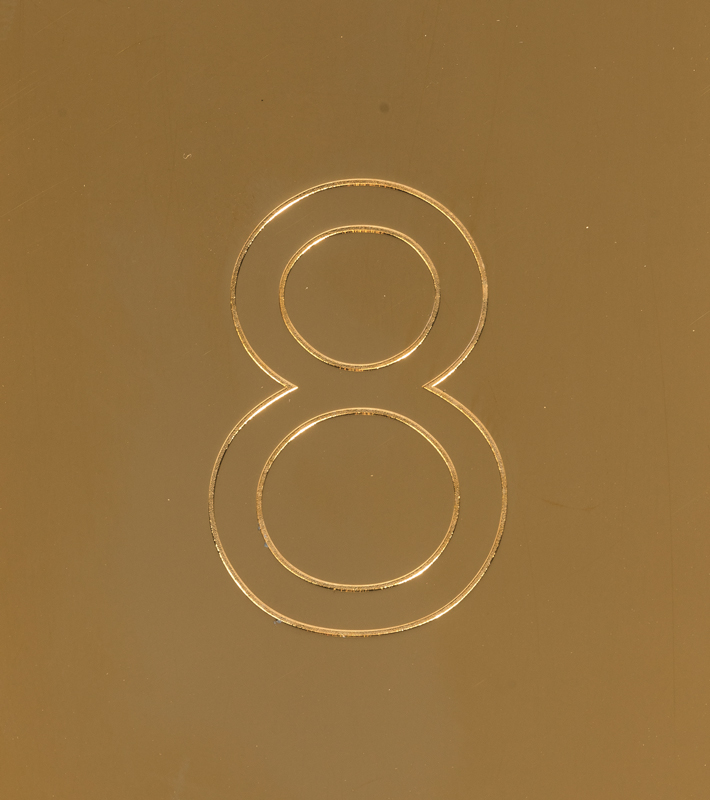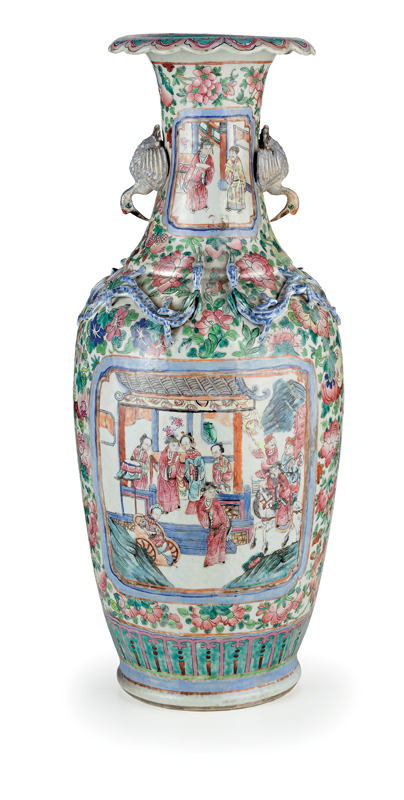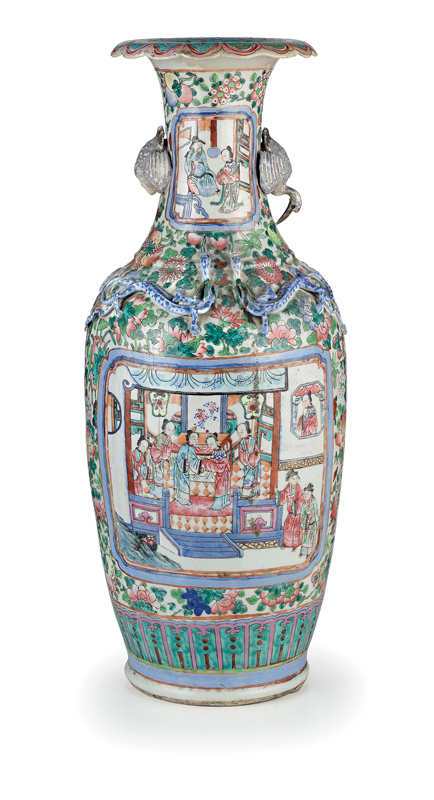COVER STORY/di Isabella Doniselli Eramo
Eight is a special number, a ‘magic’ number. In the Italian language it has a sweet, ‘round’ sound and is palindromic: whichever way you read it, it is always the same. It is the atomic number of oxygen, the element that makes life possible. There are eight planets in our solar system: Mercury, Venus, Earth, Mars, Jupiter, Saturn, Uranus and Neptune. The directions of the compass rose are eight. Eight are the main directions indicated by the Wind Rose. These are just a few examples. We could go on and on listing cases, in many different fields, in which the number 8 has a special meaning: it is not for nothing that its graphic sign, rotated by 90 degrees, becomes the symbol of infinity. But there is one place in the world where the importance of the symbolic and hidden meanings of the number eight reaches unimaginable levels for us, and that is China. Here, the ‘magic’ of the number eight permeates cultural traditions and surfaces in the choices of everyday life. Have you ever wondered, for example, why the XXIX Olympic Games, the one held in Beijing in 2008, began on August 8, 2008, at eight hours, eight minutes and eight seconds? 080808 08:08:08, not a random choice at all. According to Chinese numerology, which has always played an important role in everyday life, eight is a very powerful number, a sign of good luck, prosperity and good fortune, because its pronunciation, ba, is very similar to the word fa, which means “to make good fortune”, especially in southern China, where in local dialects (Cantonese being the first), the writing character 八 ba, which means “eight”, is read fa. The number eight is associated with good health, prosperity, success and social status and is therefore also a favourite in the business world. Some people are even willing to pay large sums of money for a car number plate or a telephone number with the number 8 repeatedly on it. Eighth-floor flats with particularly high real estate values are also highly sought after. The symbolic value of the number eight in China goes back a long way, to the origins of Chinese civilisation and thought. There are eight trigrams (ba gua), i.e. combinations of groups of three continuous and broken lines, at the base of the 64 hexagrams used for divination since ancient times and described in the ancient text known as Yijing (sometimes transcribed as I Ching), the Book of Changes, which according to tradition dates back to the mythical emperor Fuxi, the progenitor of mankind in Chinese mythology. Modern scientific criticism, on the other hand, believes that it is the result of the gradual accumulation of experience of divination practitioners serving the sovereigns and that the oldest parts date back to the Shang dynasty (16th-11th centuries BC). In the 6th century BC, Confucius was responsible for an initial reorganisation of the text, which has come down to us in the form attributed to him by the revision of all Confucian texts carried out during the Han dynasty (206 BC – 220 AD). However, what should be pointed out is that everything stems from the Eight Trigrams, in which the alternation of broken and continuous lines refers to the interaction of yin and yang, the two fundamental principles of existence, which make it possible to explain everything. Taoism, a philosophical and religious system that took shape in the middle of the first millennium B.C., put the Eight Immortals in the foreground. They quickly established themselves as the most venerated Taoist divinities of all time and remain so to this day. Their exploits are recounted in countless tales, apologies and legends, which have provided inspiration and plots for plays and vernacular literature. They are bizarre characters who transformed themselves through meditation, discipline and the use of alchemical potions, until they became beings endowed with extraordinary powers that they use to help the needy and console the derelict. The identity and peculiar powers of each of the Eight Immortals emerged between the 12th and 13th centuries in northern China, when they were also definitively codified in their iconography. From then on, they began to be depicted on a vast range of decorative pieces, works of art and everyday objects in a wide variety of materials and on the most diverse supports: porcelain, textiles, embroidery, lacquer, jade, wood, bronze, paper, ivory, etc. During the Ming (1368-1644) and Qing (1644-1912) dynasties, temples and chapels dedicated to the Eight Immortals were also built. Meanwhile, Confucianism, the philosophical-moral system, the true backbone of the entire Chinese civilisation, to which the scholars, the members of the cultured and refined elite that expressed the state officials (the “mandarins”) adhered, had adopted the number eight to identify the elements that the scholars embarked on an administrative career could not renounce: the Eight Treasures of the scholars, objects of high symbolic value, representative of the role of the cultured administrators of public affairs and of the skills and virtues necessary to carry it out. These include: books, paintings, pearls, the sound stone, the rhinoceros horn, the coin, mugwort leaves and the rhombus-shaped tablet. Eight are also the fundamental symbols of Buddhism, the religion that, on its arrival in China in the 1st century AD, enriched, renewed and enlivened Chinese religious and artistic life. The Eight Symbols appeared as highly evocative and auspicious decorative elements in all Buddhist sites and spread like wildfire in all Chinese applied arts and even in architecture: the shell, the vase, the umbrella, the banner, the endless knot, the fish, the lotus, the wheel of doctrine. Appreciated and widespread as symbols of good luck, and moreover in numbers of eight, Buddhist “treasures” or “symbols” also refer to the “Eightfold Path” (the number 8 again!), the moral conduct to be followed, according to the teaching of Gautama Buddha, to achieve liberation. Thus, the three main systems of thought that constitute the backbone of China’s entire cultural, religious, artistic and literary tradition share an extraordinary attention to the symbolic value of the number eight. Indeed, they have always explored and strengthened it, enriching it with their own distinctive elements. Perhaps this was inevitable. Chinese numerology links the number eight to the whole of man’s life: ‘At eight months he sets his milk teeth. When he is 8 years old he changes them. At the age of 8 x 2 he becomes a man, at the age of 8 x 8 his virility declines’. But there is more. Ancient Chinese cosmology imagines that Heaven is supported by eight pillars, connected to the eight directions, to the eight sacred mountains, to the eight gates through which both the clouds that bring beneficial rain and the eight winds enter: “From the north-east comes the burning wind, from the east the roaring wind, from the south-east the laughing wind, from the south the great storm, from the south-west the cool wind, from the west the enduring wind, from the north-west the sharp wind, from the north the cold wind” (from the classical Confucian text Liji, Memoirs on Rites). Thus, we are back to the winds and their eight directions, that is, to our Wind Rose which, in fact, is graphically presented as an eight-pointed star. Can we conclude that the number eight is also an opportunity for encounter and cultural dialogue between East and West? Yes, probably. Long live the number eight.

